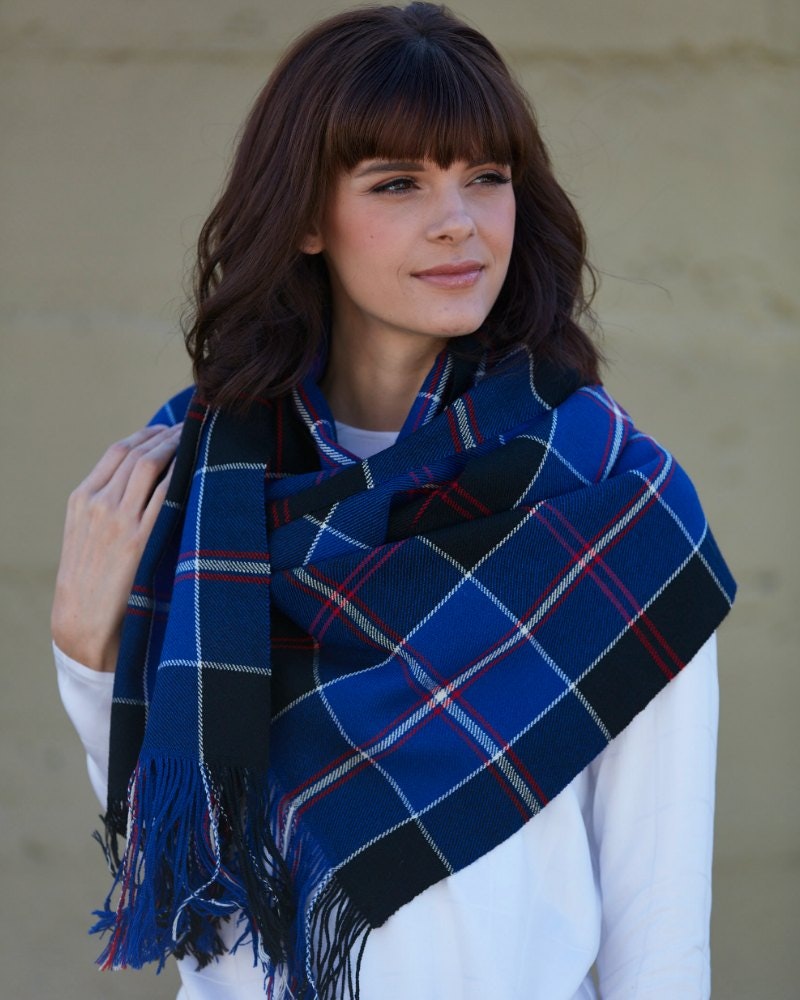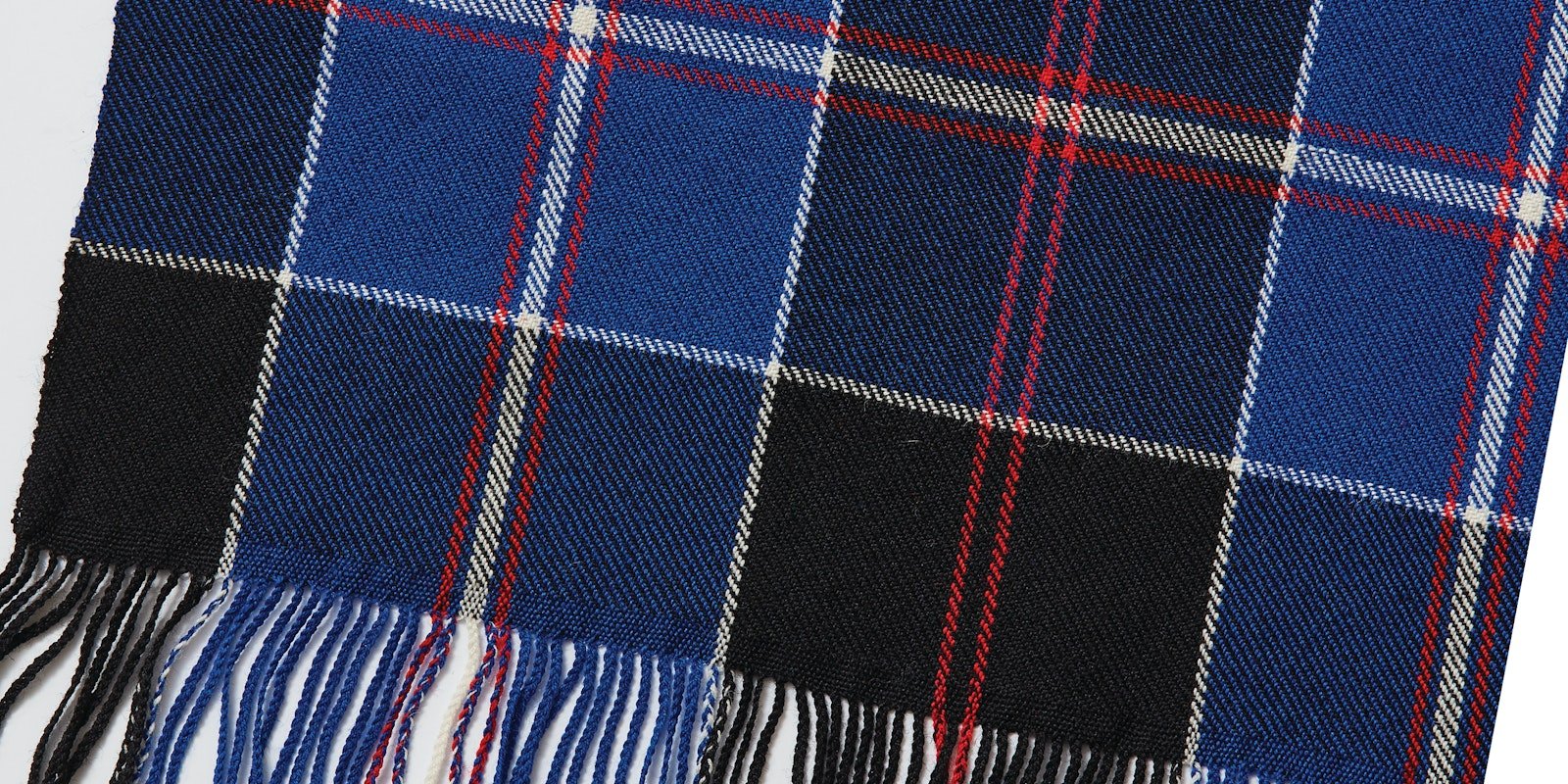Subscriber Exclusive
Design Challenge: Re-Create a Traditional Tartan Sett
Unable to track down the pattern for a family tartan, Nancy Dunlap scrutinized photographs of the fabric to create her stole.
Unable to track down the pattern for a family tartan, Nancy Dunlap scrutinized photographs of the fabric to create her stole. <a href="https://handwovenmagazine.com/4-shaft-dunlap-tartan-stole/">Continue reading.</a>
https://handwovenmagazine.com/cdn-cgi/image/format=auto/https://www.datocms-assets.com/75077/1761149157-horiz_dunlap_hwma18_1128.jpg?auto=format&w=900
Contents
Even if your family doesn’t have a tartan of its own, you can weave Nancy Dunlap’s interpretation of her husband’s family tartan. She worked out the details for you in this project—use the colors as written or choose your own.—Handwoven editors
About Scottish Tartans
The earliest tartans were checkered cloths known as “plaids” (meaning a type of garment, not a pattern) favored by the Highlanders of Scotland.
SUBSCRIBER EXCLUSIVE
Even if your family doesn’t have a tartan of its own, you can weave Nancy Dunlap’s interpretation of her husband’s family tartan. She worked out the details for you in this project—use the colors as written or choose your own.—Handwoven editors
About Scottish Tartans
The earliest tartans were checkered cloths known as “plaids” (meaning a type of garment, not a pattern) favored by the Highlanders of Scotland. [PAYWALL] Evidence of these garments can be found as far back as the sixteenth century. Unlike the tartans we know today, the patterning on them was not specific to any clan or district.
Tartans are designed using groups of dyed wool threads, called color bands, and woven as 2/2 twill. As the color bands cross each other, they create the appearance of additional colors in the cloth. Color bands repeat both horizontally and vertically along the cloth, resulting in a distinctive pattern of squares known as the sett for the tartan.
Clan-specific tartans began appearing in the early 1700s. Around this same time, we find Highlanders wearing military tartans, including the famous Black Watch tartan. In these later tartans, the color sett was a quick way to identify the clan or clan area of the wearer. Tartans as we think of them today—standardized patterns that represent specific clans, regions, or institutions—on the whole didn’t show up until after the Battle of Culloden in 1746, which was the final encounter of the Jacobite rising of 1745.
Re-creating the Dunlap Tartan Sett

I decided to weave my husband’s family tartan as a stole. Although I was unable to find the Dunlap tartan sett, I was able to locate pictures of their modern tartan, hunting tartan, and dress tartan (read about the differences between those tartans here). From these options, I decided to work with the modern tartan, and I re-created the color sett by scrutinizing the photographs. While my method may not be an exact replica of the Dunlap tartan sett, it does provide a close approximation.
If you’d like to weave your own tartan, I encourage you to consult one of the books about tartan setts, or to visit the Scottish Register of Tartans.
Weave it Yourself: Project Overview
STRUCTURE
Twill.
EQUIPMENT
4-shaft loom, 28" weaving width; 12-dent reed; 1 shuttle; 4 bobbins.
YARNS
Warp: 16/2 wool (4,400 yd/lb; Camilla Valley Farm), TR-084 Royal, 1,710 yd; TR-001 Black, 1,688 yd; TR-010 White, 180 yd; TR-035 Red, 150 yd.
Weft: 16/2 wool, TR-084 Royal, 894 yd; TR-001 Black, 906 yd; TR-010 White, 95 yd; TR-035 Red, 89 yd.
WARP LENGTH
994 ends 3¾ yd long (includes floating selvedges; allows 10" for take-up, 41" for loom waste; loom waste includes fringe).
SETTS
Warp: 36 epi (3/dent in a 12-dent reed).
Weft: 28 ppi.
DIMENSIONS
Width in the reed: 279⁄12".
Woven length: (measured under tension on the loom) 84".
Finished size: (after wet-finishing) 25½" × 78" with 6" fringe.
Weave it Yourself: Full Instructions
Visit the Handwoven library to view project instructions for the Dunlap Tartan Stole. You’ll find it on page 32.


